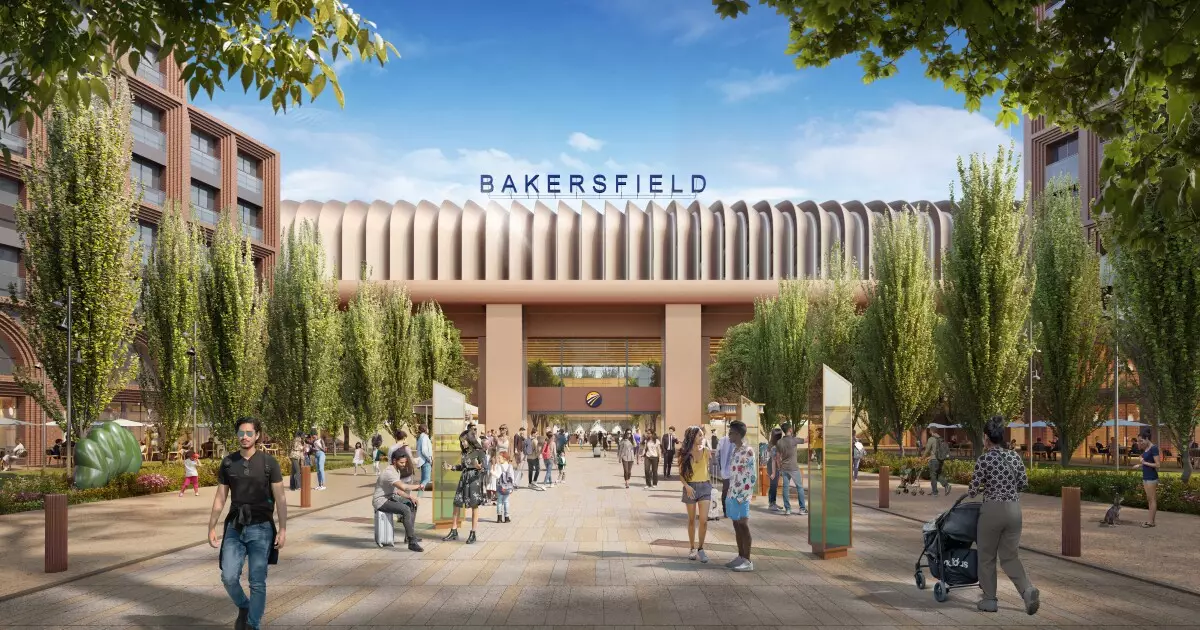California’s high-speed rail project is a monumental example of government mismanagement and fiscal irresponsibility. With a staggering budget gap of $7 billion threatening to derail the ongoing Central Valley segment, one has to question the competency of those at the helm of this venture. As reported by Helen Kerstein, a principal fiscal and policy analyst for the state Legislative Analyst’s Office, the project’s completion is in jeopardy due to miscalculations and an inability to control costs. This isn’t just a financial concern; it’s a reflection of how poorly our government handles large-scale projects.
What began as a visionary plan in 2008, estimated to cost $34 billion, has spiraled into an alarming projection of between $100 billion and $128 billion. This outrageous escalation should serve as a wake-up call, revealing that government-led initiatives are often riddled with inefficiency and a lack of accountability. All the while, California’s citizens are left footing the bill, feeling the weight of their tax dollars being squandered on a project that has more questions than answers.
Political Blame Game
The high-speed rail project has long been a pawn in political debates, often invoked to illustrate the failures of governmental overreach and misplaced priorities. President Trump has consistently criticized the project, using it as an example of wasteful spending. With the current Transportation Secretary, Sean Duffy, threatening to claw back $4 billion in federal grants, the project’s future appears bleak. Duffy’s directive for the Federal Railroad Administration to conduct a formal review underscores the federal government’s growing impatience with the California High-Speed Rail Authority.
But this isn’t merely a partisan issue; it reflects broader ideological divides. Rushing into ambitious projects often showcases liberal optimism while crumbling under the weight of financial realities. President Biden’s administration reinstated nearly $1 billion in federal aid that Trump rescinded, exemplifying how policy shifts can have immediate and profound impacts on project viability. In a state that is often seen as a progressive beacon, the reality of this financial nightmare should spur a reassessment of priorities and methodologies.
Internal Struggles and Legislative Challenges
The dysfunction within the California High-Speed Rail Authority itself is troubling. Kerstein’s admonitions highlight an alarming lack of concrete solutions to the $7 billion budget gap, revealing the state’s reliance on a series of temporary fixes rather than sustainable planning. Although the authority has undertaken efforts to trim costs—like securing a $3.1 billion grant from the Infrastructure Investment and Jobs Act—they remain in a precarious position, with no end in sight.
Furthermore, assembly members are caught in an exasperating loop as they grapple with fiscal budgets for 2025-26 while waiting for the necessary project report due in August. This disconnect between timelines makes it nearly impossible to make informed decisions, risking further financial hemorrhaging. The legislative framework seems ill-equipped to handle an issue of this magnitude, which is indicative of broader weaknesses in governmental budgeting processes.
Rural Communities and Wildfire Prevention: A Better Use of Funds?
A voice of dissent is coming not just from political opposition but also from within the very communities that the high-speed rail intends to serve. Assemblymember Alexandra Macedo has raised an important point by introducing Assembly Bill 267, which seeks to redirect $1 billion of cap-and-trade funding from the high-speed rail to pressing concerns such as wildfire prevention and water infrastructure. This bill resonates with many Californians who are increasingly frustrated by what they perceive as a misallocation of resources.
Macedo’s statement encapsulates the sentiment that while the high-speed rail is mired in financial quagmire, the real issues affecting rural communities—like devastating wildfires—remain underfunded and overshadowed. The idea that taxpayer dollars should prioritize immediate community needs over a mismanaged mega-project is not just logical, but a call for a responsible fiscal strategy that puts the welfare of citizens above bureaucratic ambition.
Transformational Leadership or Resigned Ineptitude?
The recent appointment of Ian Choudri as the Chief Executive of the California High-Speed Rail Authority could signal a change. However, as Mark Tollefson, the authority’s chief of staff, stated, Choudri’s task to review the entire project is rife with ambiguity. The focus on cost efficiencies and exploring public-private partnerships raises the question: will this lead to transformational improvements, or simply more layers of bureaucracy and ineffectiveness?
The urgency of the situation cannot be overstated. California is at a crossroads, facing an urgent need for infrastructure improvement while wrestling with financial mismanagement. The next steps could determine not just the fate of the high-speed rail project, but set a precedent for how the state approaches fiscal responsibility and infrastructure investment going forward.

